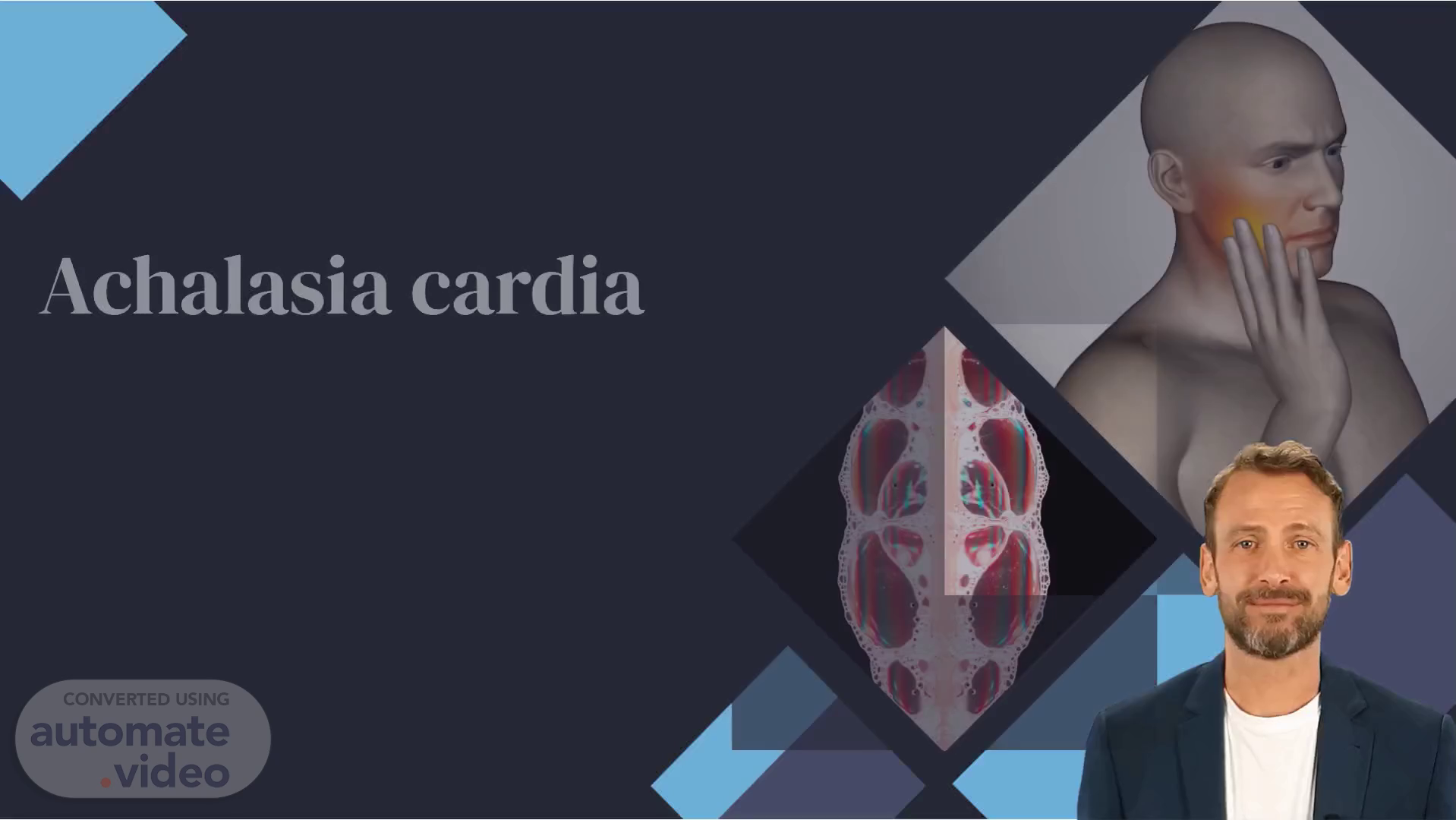
fdb6f770-cadb-4971-abc6-063e4a9e1a73
Scene 1 (0s)
[Virtual Presenter] Good afternoon everyone. Today, I'll be presenting to you about a rare motility disorder of the esophagus called Achalasia cardia. We'll be diving into its symptoms, causes, and pathophysiology. I hope you find this presentation informative and educational. Let's get started..
Scene 2 (20s)
[Virtual Presenter] Achalasia cardia is a rare motility disorder of the esophagus that affects the relaxation of the lower esophageal sphincter and peristalsis in the esophagus. Common symptoms include difficulty swallowing, regurgitation and chest pain. Treatment of this motility disorder may include medications, physical therapy or surgery. In the upcoming slides, we will provide more information on these treatment options..
Scene 3 (48s)
[Virtual Presenter] Achalasia cardia is an esophageal disorder caused by a degeneration of the ganglion cells in the myenteric plexus of the esophagus, leading to impaired relaxation of the lower esophageal sphincter and reduced peristaltic activity of the esophageal muscles. This can cause difficulty swallowing, chest pain, heartburn, and even regurgitation of food if left untreated. However, various treatments are available for this condition..
Scene 4 (1m 17s)
[Audio] Achalasia cardia is a disorder in the esophagus that affects the normal muscular contractions that occur during swallowing. To diagnose achalasia cardia, a combination of clinical symptoms, endoscopic findings, manometric studies, and barium swallow studies are used. Symptoms include difficulty swallowing, chest pain, and regurgitation of food. Endoscopic findings can be a widened esophageal lumen and loss of normal peristalsis. Manometric studies identify if there are pressure abnormalities in the esophagus. Barium swallow studies are used to confirm the diagnosis..
Scene 5 (1m 58s)
[Audio] Achalasia cardia is a condition that affects the esophagus, causing it to lose its ability to relax and allow food to pass through. There are three treatments available: pneumatic dilation, surgical myotomy, and botulinum toxin injection. Pneumatic dilation consists of using a balloon to stretch the lower esophageal sphincter, while surgical myotomy seeks to cut the muscle fibers of the LES. With botulinum toxin injection, the goal is to paralyze the LES, enabling food to travel more easily. As you consider which treatment option is right for you, be sure to consult your doctor and make an informed decision..
Scene 6 (2m 41s)
[Audio] Achalasia cardia is a complex condition that, if left untreated, can lead to long-term complications such as esophageal perforation, aspiration pneumonia, and Barrett's esophagus. However, treatments are available which can help manage these complications and ultimately allow the patient to live without the effects of the condition..
Scene 7 (3m 1s)
[Audio] Achalasia cardia is a disorder of the esophagus that affects the way muscles and nerves function, characterized by the impaired relaxation of the lower esophageal sphincter and loss of normal peristalsis in the esophageal body. Treatment options for achalasia cardia include pneumatic dilation, surgical myotomy, and injection of botulinum toxin, with possible complications including esophageal perforation, aspiration pneumonia, and Barrett's esophagus..
Scene 8 (3m 30s)
[email protected]. +91 620 421 838 yourwebsite.com.